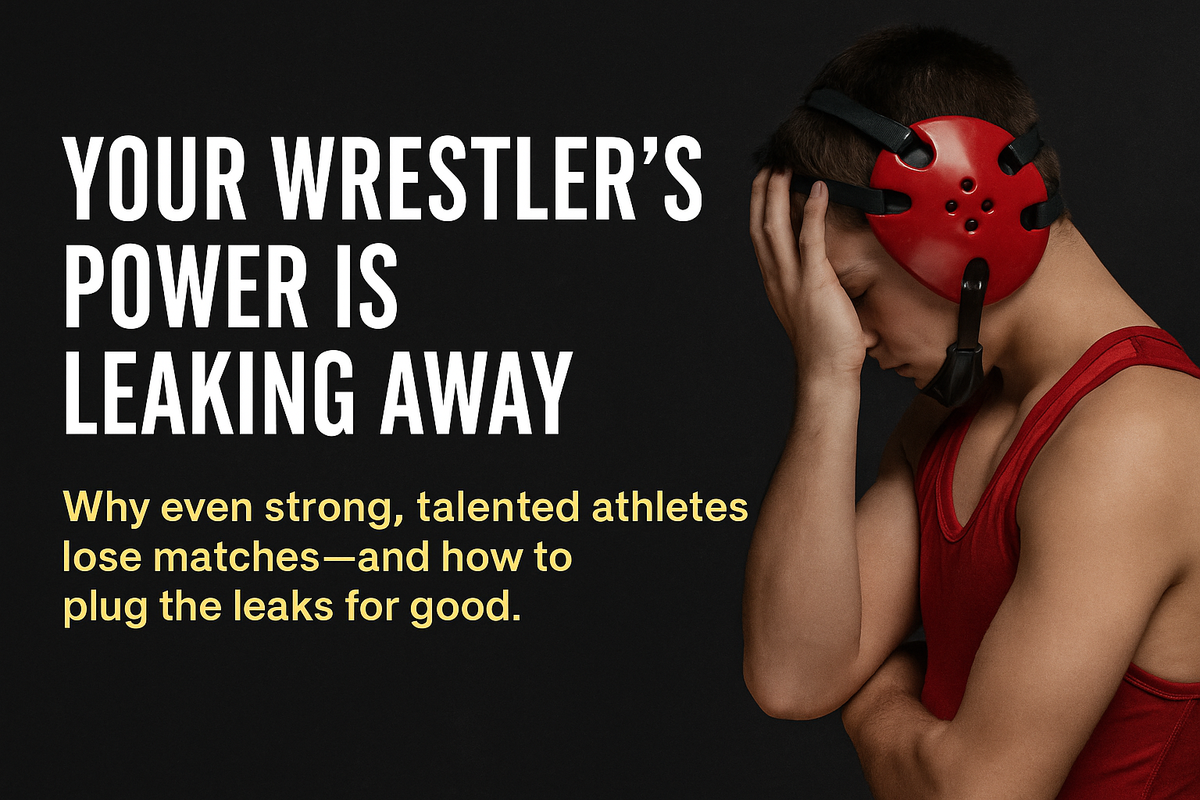The Primary Reason To Do Strength and Conditioning

Most parents think their wrestler loses because they weren’t strong enough, fast enough, or conditioned enough.
The truth? Even the best-conditioned athletes bleed power every second they move—because no one ever taught them how to use their strength with perfect efficiency.
Think of it like a leaky hose. The water (your wrestler’s strength) is there, but if it sprays out in the wrong direction, you’ll never get full pressure where it matters. Wrestling is no different—if the legs, hips, and core aren’t working together with precision, all that muscle and conditioning go to waste.
That’s why building muscle alone isn’t enough. The real difference between good and dominant wrestlers comes from mastering the movement skills that transfer every ounce of strength into usable, match-winning force.
The Real Goal: Productive Use of Force
We’re not training just to make muscles bigger.
We’re training to produce force more effectively—to take the strength you already have and deliver it with maximum speed, torque, and control in the exact direction you want.
That’s what I call productive use of force.
The movement skills and techniques you learn in the gym determine how efficiently you can turn your strength into action on the mat. Every takedown, every scramble, every explosive escape depends on it.
Why Wrestling Alone Can’t Teach This
Some parents believe, “My kid wrestles year-round, so they’re building all the skills they need.”
Here’s the problem: wrestling teaches wrestling movements.
It doesn’t systematically teach the universal movement patterns your body uses in every sport and physical task—things like:
- Squatting (triple flexion and triple extension of the hips, knees, and ankles)
- Hinging (hip power transfer)
- Pressing and pulling (upper body force application)
- Rotating (core torque production)
In sport, your legs are almost always in some degree of triple flexion or triple extension. That’s why a full range of motion back squat is so powerful—it’s the complete expression of that pattern. If your wrestler masters that, every other movement involving the legs instantly improves.
The Hidden Advantages of Movement Mastery
When your wrestler develops these universal skills, here’s what happens:
- They stop wasting energy in bad positions
- They maintain balance under pressure
- They can apply more force in less time
- They recover faster during matches
- They can adapt to unexpected situations without losing power
It’s why some wrestlers seem like they have “another gear” — their bodies are trained to channel every ounce of effort into effective motion, without leaks.
Why Strength Alone Isn’t Enough
A father once told me, “My son doesn’t get out-muscled, so he doesn’t need strength training.”
Here’s the problem with that thinking:
It’s not about being stronger than the other kid in an arm-wrestling contest—it’s about being a better mover in a wrestling match.
Two wrestlers can have the same muscle strength on paper. But the one who moves with better mechanics, balance, coordination, agility and precision will win that exchange almost every time—because their body is using every bit of that strength productively.
The Bottom Line for Parents
If your wrestler is moving well now, our goal is to make him/her move extraordinarily well.
No human moves perfectly. There’s always room to refine mechanics, sharpen efficiency, and unlock new levels of power.
If your wrestler already has a strength and conditioning system they love and it’s producing measurable gains in both movement skill and strength, keep going.
But if they’re not in a system like mine—one built specifically for wrestlers to master these universal movement skills—then they are leaving performance on the table. No amount of wrestling alone will close that gap.
When we train strength, we’re not just building a stronger athlete… we’re building a smarter, more efficient, more dangerous mover. And that’s the kind of wrestler who wins when it matters most.
